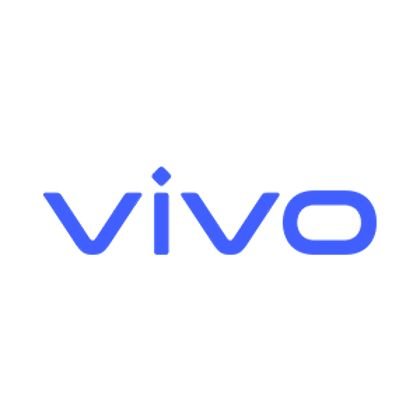Augmented Reality (AR) has emerged as a transformative technology across various industries, offering innovative ways to engage customers, enhance productivity, and create immersive experiences. By overlaying digital content onto the real world, AR bridges the gap between the physical and digital realms, unlocking new opportunities for businesses. This article explores the top applications of Augmented Reality in business, highlighting how companies are leveraging this technology to gain a competitive edge.
1. Retail and E-Commerce
Virtual Try-Ons and Fitting Rooms
One of the most prominent applications of AR in retail is virtual try-ons and fitting rooms. AR enables customers to visualize how products such as clothing, accessories, or makeup will look on them without needing to physically try them on. This technology enhances the shopping experience, reduces the likelihood of returns, and increases customer satisfaction.
- Example: Sephora’s Virtual Artist app allows customers to try on makeup virtually, providing a realistic preview of how different products will look on their face.
Interactive Product Visualization
AR enables customers to interact with and visualize products in a more immersive way. For example, customers can use their smartphones to see how furniture will look in their home or how a car will appear in their driveway. This application is particularly valuable for products that are difficult to transport or visualize.
- Example: IKEA’s AR app, IKEA Place, allows users to place virtual furniture in their home to see how it fits and looks before making a purchase.
2. Manufacturing and Industrial Design
AR-Enhanced Training and Maintenance
AR is revolutionizing training and maintenance in the manufacturing sector by providing workers with real-time, hands-free guidance. Through AR headsets or smart glasses, workers can access step-by-step instructions, safety protocols, and diagrams overlaid onto their field of view, reducing the need for physical manuals and minimizing errors.
- Example: Boeing uses AR to assist technicians in wiring airplanes, providing real-time instructions and reducing production time by 25%.
Prototyping and Product Design
AR allows designers and engineers to visualize and interact with 3D models of products in a real-world environment before they are built. This capability speeds up the design process, reduces the cost of physical prototypes, and allows for quicker iterations and improvements.
- Example: Ford uses AR to create virtual prototypes of car designs, enabling engineers to make real-time adjustments and collaborate more effectively across teams.
3. Healthcare
Surgical Assistance and Medical Training
AR is making significant strides in healthcare by enhancing surgical procedures and medical training. Surgeons can use AR to overlay critical information, such as patient vitals or MRI scans, onto their field of view during surgery. Additionally, AR can simulate complex medical procedures for training purposes, providing a safe and immersive learning environment for medical students.
- Example: The AccuVein AR system helps healthcare professionals locate veins more accurately by projecting a map of the veins onto the patient’s skin, improving the success rate of intravenous procedures.
Patient Education and Engagement
AR is also being used to improve patient education and engagement by visualizing complex medical information. Patients can see 3D models of their anatomy, understand the details of their medical conditions, and comprehend the proposed treatments, leading to better-informed decisions.
- Example: AR apps can show patients how a particular treatment will affect their body, helping them visualize the process and outcome of their medical procedures.
4. Real Estate
Virtual Property Tours
AR is transforming the real estate industry by offering virtual property tours that allow potential buyers to explore properties without physically visiting them. By using AR, buyers can visualize how different design options, furniture, and renovations will look in the space, helping them make more informed purchasing decisions.
- Example: Real estate agencies use AR apps to provide prospective buyers with immersive 3D tours of properties, enabling them to explore homes from their smartphones or tablets.
Architectural Visualization
AR allows architects and developers to visualize building plans and designs in a real-world context before construction begins. This application helps stakeholders better understand the project, identify potential issues, and make adjustments early in the design process.
- Example: AR can be used to project a 3D model of a proposed building onto a construction site, allowing clients and stakeholders to see how the finished structure will look in its actual environment.
5. Education and Training
Interactive Learning Experiences
AR is enhancing education by creating interactive and immersive learning experiences. Students can use AR to explore complex subjects such as anatomy, astronomy, and history in a more engaging and hands-on way. By visualizing abstract concepts in 3D, AR helps students grasp difficult topics more effectively.
- Example: AR apps in classrooms allow students to interact with 3D models of the solar system, historical artifacts, or human anatomy, making learning more engaging and interactive.
Corporate Training and Onboarding
AR is being used in corporate training to create realistic simulations and scenarios that help employees learn new skills and procedures. For example, AR can simulate a customer service interaction or a complex technical task, allowing employees to practice and refine their skills in a safe environment.
- Example: AR training programs can simulate real-world scenarios, such as operating machinery or handling customer inquiries, providing employees with hands-on experience without the risk of costly mistakes.
6. Marketing and Advertising
Immersive Advertising Campaigns
AR is being used to create immersive and interactive advertising campaigns that capture consumers’ attention and engage them in new ways. Brands can use AR to bring static advertisements to life, allowing consumers to interact with products, explore features, and even make purchases directly from the ad.
- Example: Pepsi’s “Unbelievable Bus Shelter” campaign used AR to create an interactive experience at a bus stop, where passersby could see digital animations overlaid onto the real world through a transparent screen.
Product Demonstrations
AR allows brands to demonstrate products in an innovative way, helping consumers understand their features and benefits. For example, AR can show how a product works or highlight its key components, providing a more engaging and informative experience than traditional advertising.
- Example: AR-enabled product packaging allows consumers to scan a product with their smartphone to see a 3D demonstration of how it works or access additional information and promotions.
7. Travel and Tourism
Augmented Tour Guides
AR is enhancing the travel experience by providing tourists with augmented tour guides that offer information and insights about landmarks, attractions, and historical sites. By pointing their smartphones at a location, tourists can access detailed information, audio guides, and interactive content that enriches their visit.
- Example: AR apps can provide historical context, fun facts, and interactive maps during a walking tour, making the experience more educational and engaging.
Virtual Travel Experiences
AR is also being used to create virtual travel experiences that allow users to explore destinations from the comfort of their homes. This application is particularly valuable for travel planning, as it enables potential tourists to preview destinations and attractions before booking their trip.
- Example: AR apps can offer a virtual tour of a museum, historical site, or city, providing users with an immersive experience that helps them plan their itinerary.
8. Automotive Industry
AR-Enhanced Driving Assistance
AR is being integrated into vehicles to enhance the driving experience by providing real-time information and navigation overlays on the windshield. This technology can display directions, speed limits, and hazard warnings directly in the driver’s line of sight, reducing distractions and improving safety.
- Example: BMW and Mercedes-Benz have developed AR head-up displays that project navigation instructions and other important information onto the windshield, allowing drivers to keep their eyes on the road.
Virtual Car Customization
AR is also being used to offer virtual car customization experiences, allowing customers to visualize different paint colors, interior options, and accessories before making a purchase. This application enhances the car-buying experience and helps customers make more informed decisions.
- Example: AR apps enable customers to see how different customization options will look on a vehicle in real time, either in the showroom or from their home.
Conclusion
Augmented Reality is rapidly transforming the way businesses operate, offering innovative solutions that enhance customer experiences, improve operational efficiency, and drive growth. As AR technology continues to evolve, its applications across various industries will expand, creating new opportunities for businesses to differentiate themselves in a competitive market. By embracing AR, companies can stay ahead of the curve, offering unique and immersive experiences that resonate with modern consumers.









